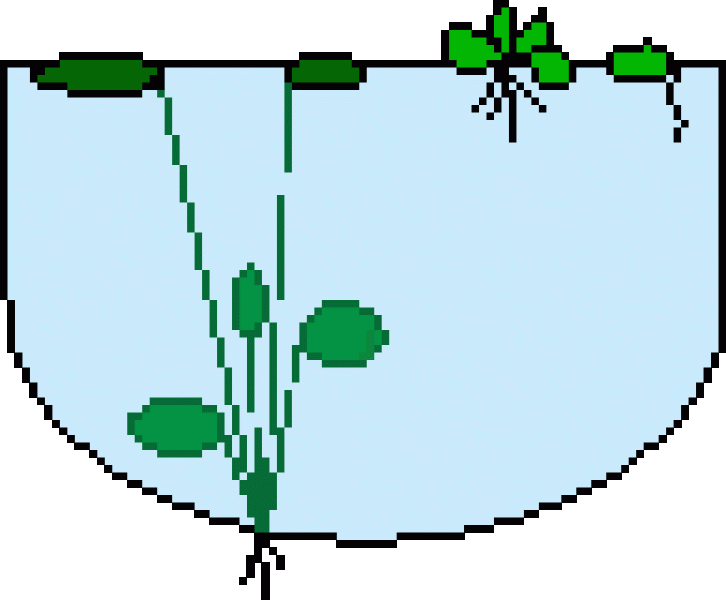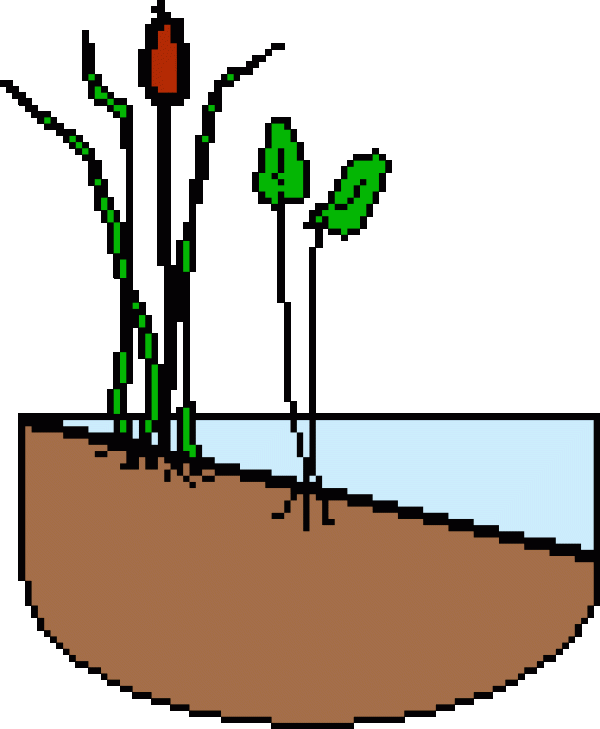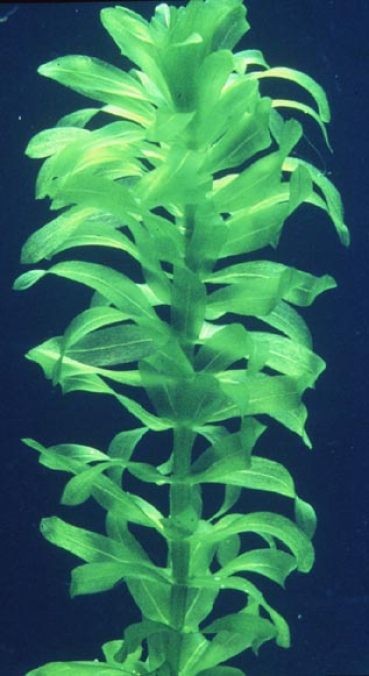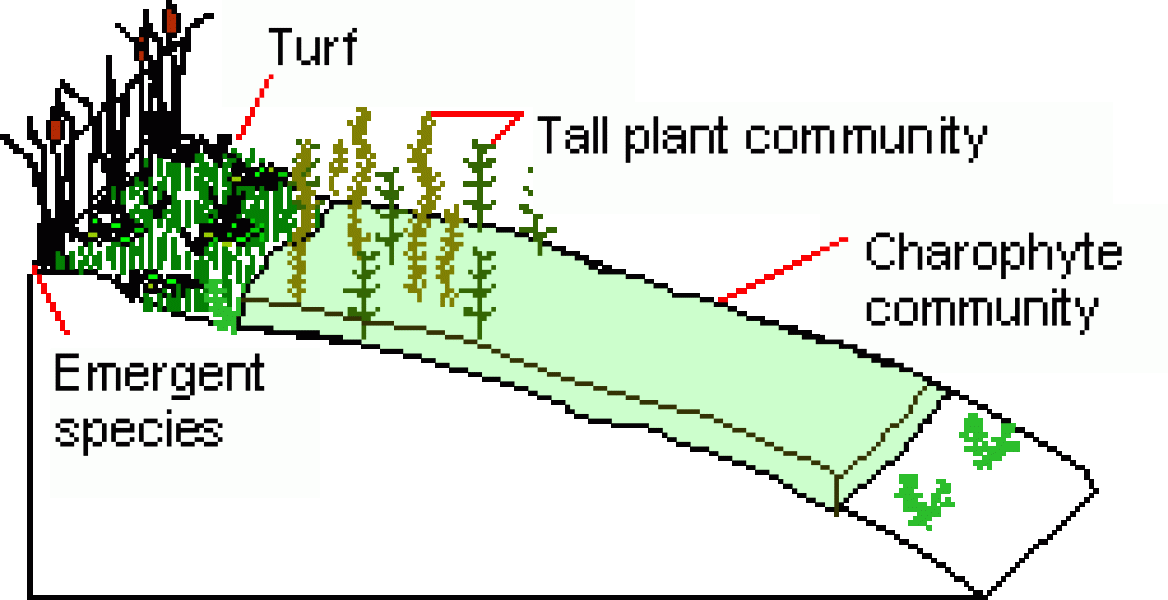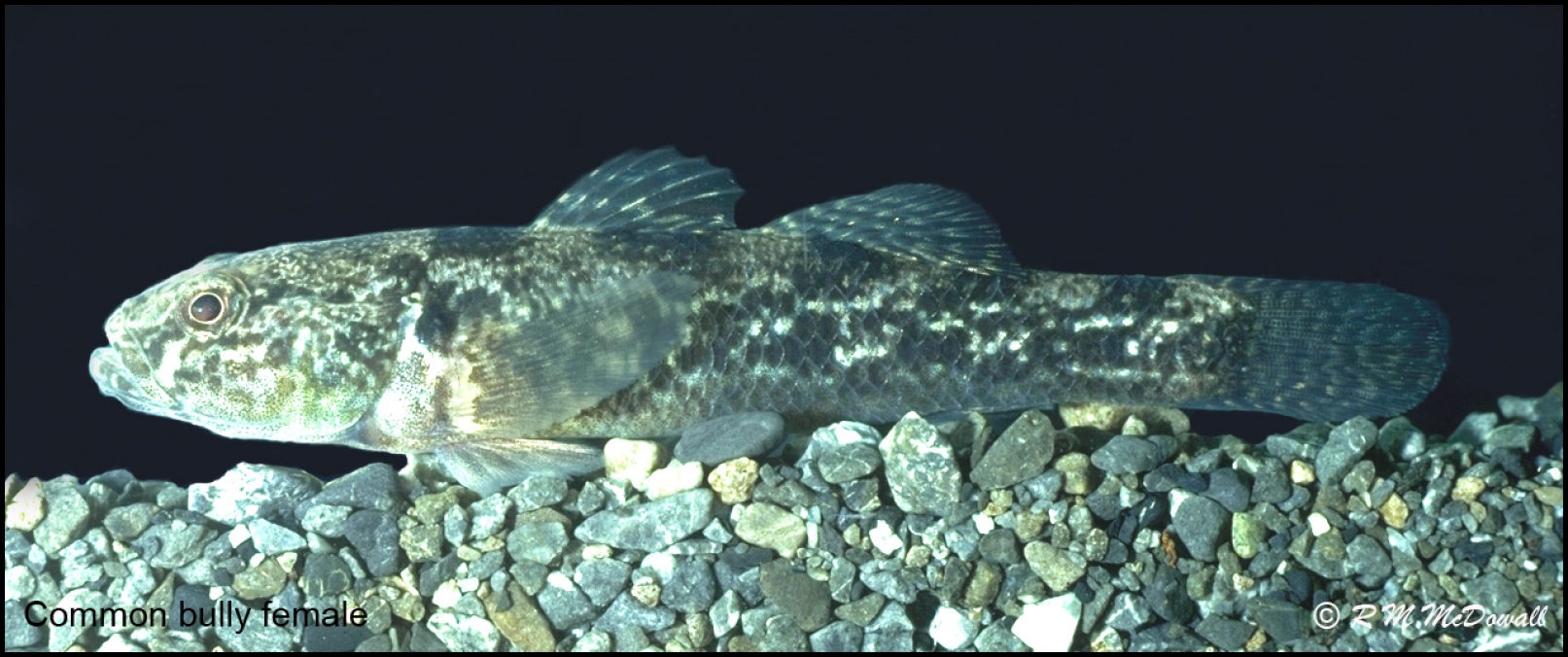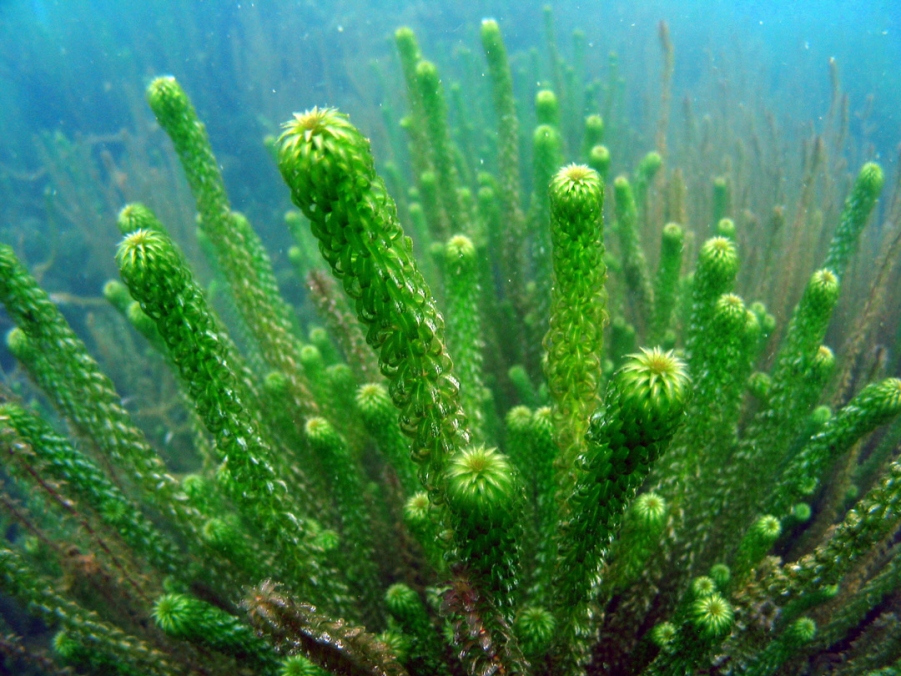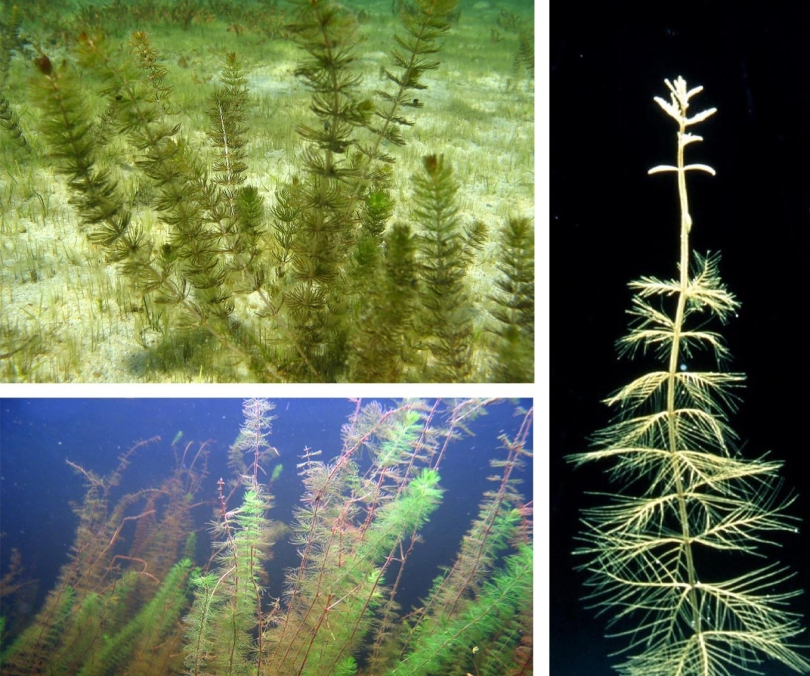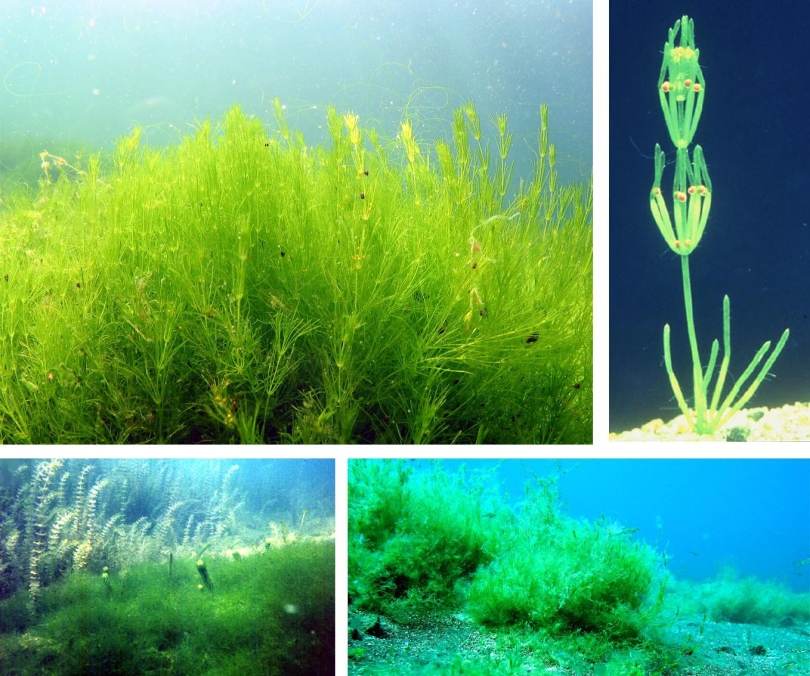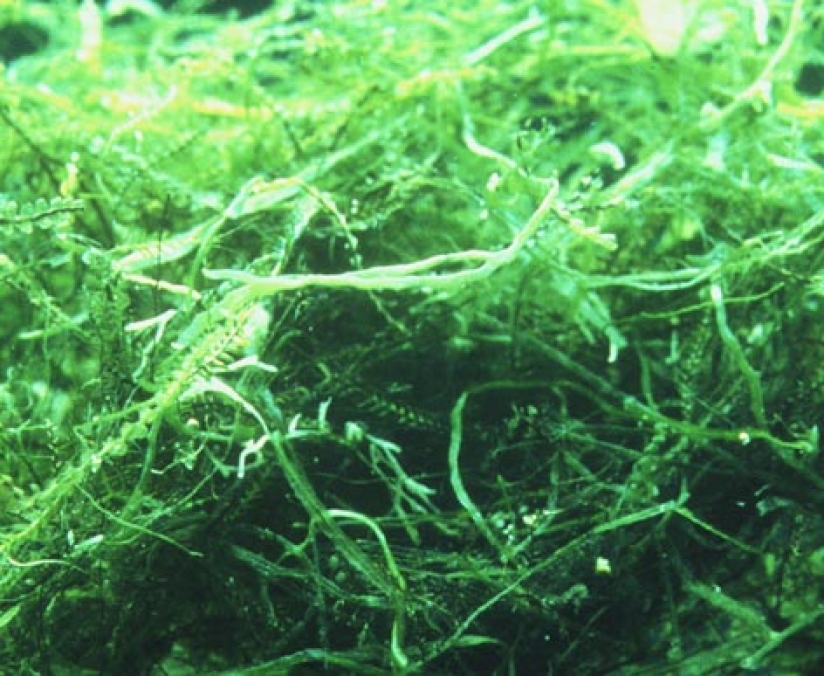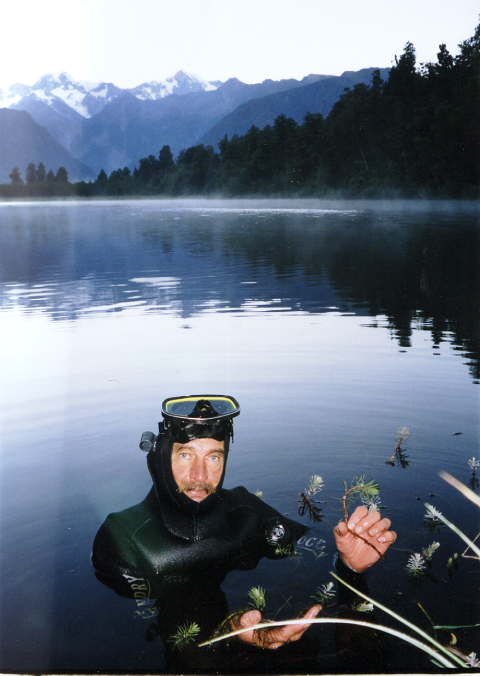Aquatic plants refer to any organisms living in water that photosynthesise and complete part or all of their life cycle in or near the water.
Aquatic plants may include single-celled organisms (e.g., phytoplankton) that can make water turn green in colour when they are abundant, or they can be long filaments that may grow on rocks and make them slippery or slimy when you pick them up. In this article, the aquatic plants we will be looking at are all quite large and can appear similar to plants that we see on land. These aquatic plants are often collectively referred to as 'macrophytes', which means 'large plants'.
Freshwater aquatic plants can be seen growing in our lakes, rivers, streams and ponds and they form a diverse group. Even though aquatic plants are quite diverse, they can be grouped into three general categories (see images below):
- Submerged aquatic plants grow below the water’s surface. They may be rooted or non-rooted to the bottom sediments.
- Floating aquatic plants float freely on the water’s surface, while floating-leaved plants have their leaves on the surface, but they are attached to bottom-rooted plants by long stalks or petioles.
- Emergent aquatic plants are rooted in the water-logged sediments while leaves and stems protrude up above the water’s surface.
What are the benefits of aquatic plants?
Aquatic plants are a natural and important part of most lake communities and provide many benefits to fish, wildlife, water quality and people.
Aquatic plants serve many important functions. They:
Provide food
Aquatic plants are an essential part of a lake ecosystem in a lake. By converting (with the help of sunlight) the basic chemical nutrients available to them in the water and sediments into plant matter via photosynthesis, they then become food for lake fish, insects, snails, water birds and other wildlife.
Provide shelter
Aquatic plants provide a refuge for small animals against being eaten by bigger ones. Many native New Zealand fish including the Common Bully use the plants in a lake to hide from other fish such as eels and trout that eat them. Koura, our native freshwater crayfish also use aquatic plants as a shelter.
Improve water clarity
Aquatic plants can help maintain clear water in a lake. They do this by trapping fine sediments and algae suspended in the water and they can help to prevent the bottom sediments from being stirred up by wind, waves and boat activity.
Improve water quality
Submerged aquatic plants can assist in the maintenance of good water quality. They can provide an important buffer strip at the edge of a lake or river and take up many of the harmful nutrients and pollutants that may run into the water from the surrounding land. They can also reduce nutrients directly within the water column and help to lessen the chance of undesirable algal blooms developing.
Protect shorelines
Beds of aquatic plants can help prevent shoreline erosion by dampening the effects of wave action and currents. The presence of plants can slow down the water movement with stems and leaves helping to absorb wave energy. Emergent plants growing around lake margins also play a part in protecting lake shoreline’s by stabilising the lake bottom in those areas.
Improve aesthetics
In many lakes, aquatic plants contribute to the visual appearance of the setting and are enjoyable in their own right. The Water Lily is a good example of an aquatic plant that is often introduced to a lake or pond for this reason.
Provide economic value
New Zealand has a fast growing tourism industry that is centred on our lakes and rivers and the recreation they support. An example is trout fishing. Trout depend on the small fish and animals (snails and invertebrates) and the presence of healthy diverse plant beds help to improve the variety and amount of food available to trout.
What are invasive weeds?
Invasive submerged weeds originate from other countries and several have had spectacular success in invading New Zealand lakes. Invasive weeds can be defined as those plants that interfere with, or have the potential to interfere with the values or uses of a water body.
When invasive weeds replace our native plants, there are significant environmental consequences:
- Important plant and animal species are lost (biodiversity).
- Habitats for native fish and wildlife can be adversely modified or destroyed.
- Recreational activities such as swimming, boating and fishing can be restricted.
- Invasive weeds can ruin the aesthetic appeal of a water body.
Invasive weeds can also adversely affect economic value:
- Restrict irrigation and drinking water intakes.
- Clog hydroelectric dams.
- Block navigational pathways
- Restrict water movement causing flooding.
- Reduce tourism and property values.
NZ's 4 worst submerged aliens
Aliens attack!
Invasive plant species can be quick to establish in a lake and once established they can form solid bands of dense weed around lake margins. Some of these invasive weeds can grow to over 8 meters in height (that’s taller than a house) and can grow down to a depth of 10 meters. Although native charophyte communities may continue to grow down beyond this depth in clear water, some invasive species (e.g., Ceratophyllum) can still destroy the native vegetation beyond 10 meters by periodically collapsing down the depth profile and smothering deeper plants.
Why monitor aquatic plants?
Monitoring plants allow us to better understand how lakes work, what condition they are in, and how best to preserve their quality.
Divers using SCUBA equipment can record information about aquatic plants under the water using waterproof paper attached to a clipboard.
Monitoring aquatic plants is important in making weed management decisions. It allows lake managers to detect invasive species at an early stage, allows them to monitor changes in a lake over time and provides them with a means to assess the effectiveness of weed control efforts and other management activities.
Seeing below the surface
Native aquatic plants are those that have evolved and developed in New Zealand and are a natural part of our lakes and other water bodies.
Native aquatic plants play many important roles in maintaining healthy aquatic ecosystems and prior to the arrival of humans, New Zealand lakes would have contained only native aquatic plant species. Lets take a look at what aquatic plants look like and what you will see below the surface!
Put on your diving mask and fins and take a swim out from the side of an all-native, clear water New Zealand lake – what will you see?
Emergent zoneLet’s start at the lake edge – if a lake is sheltered and has not been disturbed, you are likely to find a band of emergent plant species growing around the lake margin. These species can include the tall sedges, rushes and grasses. |
Turf communityIn the shallow zone of a lake, at about knee deep you can often find a great diversity of low growing plants that we refer to as the turf community. This mixed community can tolerate short-term exposure out of the water that may result from changes in water level. |
Tall plant communityNext you will need to start swimming. Growing up towards the surface you will see some taller growing plants – our tall plant community. These tall native plants will often be growing among other plants (turf or charophyte communities) and include the Milfoil and Potamogeton species. |
Charophyte communitySwimming further down the depth profile you will find the charophytes. Charophytes are in fact macro-algae that form dense meadows and are a very important plant community in lake ecosystems. |
Bryophyte communityLastly, you will have to use a submarine or dive gear if you want to see these plants. Deepwater Bryophytes (mosses and liverworts) are quite rare around the world and in New Zealand, can only be found in a small number of clear water lakes in the South Island. |
Surviving under water
Submerged aquatic plants like plants that grow on land, still require light to photosynthesise and grow. Because of this, they are restricted to living around the lake edges where the water is shallow enough to allow light to penetrate to the bottom. In lakes with clear water, light can penetrate down to considerable depths and therefore aquatic plants can be found growing much deeper. For example, in Lake Whakatipu, a clear water lake in the South Island, submerged plants (in this case mosses and liverworts) can grow down to 60m deep!
Aquatic plants have made many other adaptations to a life in water and many of these can be easily observed.
- Submerged aquatic plants have flaccid stems (they will hang limply out of water). This is because the buoyancy they get from being surrounded in water gives them the support needed without requiring strengthening tissue in their stems.
- Living in water also leads to a reduction in roots and water conducting tissues. Since submerged plants are able to absorb water, nutrients and dissolved gases directly from the surrounding water, roots may some times be used primarily for anchorage while a few species have no roots at all.
- Another adaptation to life in water is the presence of specialised leaf shapes. Leaves are often small and thin giving them the flexibility to resist potential damage from water movement.
Some submerged aquatic plants also have the ability to reproduce vegetatively. That means they can grow directly from small broken fragments, which enables them to spread without the need for flowers or seeds.
What can you do to protect lakes around you?
You are the first line of defence against aquatic weed invasions. If new invasive plants are found early enough in a lake or river, managers have a much better chance of being able to remove them before they get out of control.
So what can you do?
- Don’t be a spreader – check boats, trailers and fishing gear for plants and remove them when you leave the water and always check and remove plants before entering a new lake.
- Be kind to your pets – don’t release non-native plants and fish from fish bowels or ponds into natural waterbodies.
- Know your enemy – check out the website listed at the end of this newsletter and learn to identify the plants you find in a lake near you (make it a class project). If in doubt – collect samples and have them identified.
- Be observant – note any changes in the lakes, ponds, rivers and streams around you and report any new sightings to Department of Conservation or Regional Council Pest Plant officers as soon as possible.
Communicate – talk to friends and family and teach them about protecting lakes from aquatic weeds


